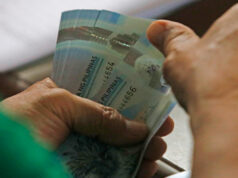THE WORLD BANK (WB) said that the Philippines’ social protection measures are “well-developed” with increased coverage for the marginalized, but noted gaps in inter-government coordination.
“The Philippines has achieved relatively good coverage of the poor and extreme poor in its social welfare schemes,” the World Bank said in its Social Protection Review and Assessment report for the Philippines.
The bank has identified over 60 social protection programs mostly relating to social assistance, social insurance, and labor market interventions.
“Institutionally, the SP sector seems to be well-developed and has a clear framework of laws and regulations with different actors with well-defined roles and controls in place to ensure good governance,” it said, while noting that the country has “achieved relatively good coverage of the poor and extreme poor.”
It also said that the Philippines’ social protection programs are “flexible,” and can respond to emergencies, shocks, and other crises.
However, it said that there are some inefficiencies in the government as some functions relating to social protection are redundant due to the lack of coordination.
“The review also shows that the Philippines suffers from a weak level of coherence of SP (social protection) programs, which results in fragmented and overlapping or duplication of programs. While some programs exhibit internal coherence (i.e. complementarity of policies and programs, and delivery mechanisms within a national agency), most existing SP programs are not aligned to an all-embracing SP system that establishes institutional arrangements that promote coordination across institutions,” the World Bank said.
It also noted that while there are notable projects that cover a significant number of people, some need to have “clear and robust” implementation rules and regulations.
“There are still many programs with overlapping mandates and target populations, and a lot of gaps in their monitoring systems. Having an integrated social protection information system would allow policy makers to better monitor inputs, outputs and outcomes (e.g. who are beneficiaries, what are they receiving, at what frequency, what are the existing gaps, etc). The development of an integrated information system would be critical for the country going forward,” it added.
The Department of Budget and Management (DBM) said separately in a statement that it has allotted P2.3 billion of the Department of Social Welfare and Development’s P136.8 billion budget for 2019 to the Sustainable Livelihood Program (SLP).
The programs involve workshops on micro-enterprise development, access to credit, technical-vocational training, pre-employment assistance services, and other support services.
“This is open to every poor and disadvantaged Filipino family, including Listahanan-identified households,” Budget Secretary Benjamin E. Diokno was quoted as saying.
“The government stands firm in its belief that promoting the right conditions for human capital development in the country is a key factor in sustaining socioeconomic stability,” he added.
The government aims to cut poverty incidence to 14% in 2022 from 21.6% in 2015. Its Ambisyon Natin 2040 goal also aims to be an upper-middle income country with zero poverty. — Elijah Joseph C. Tubayan



